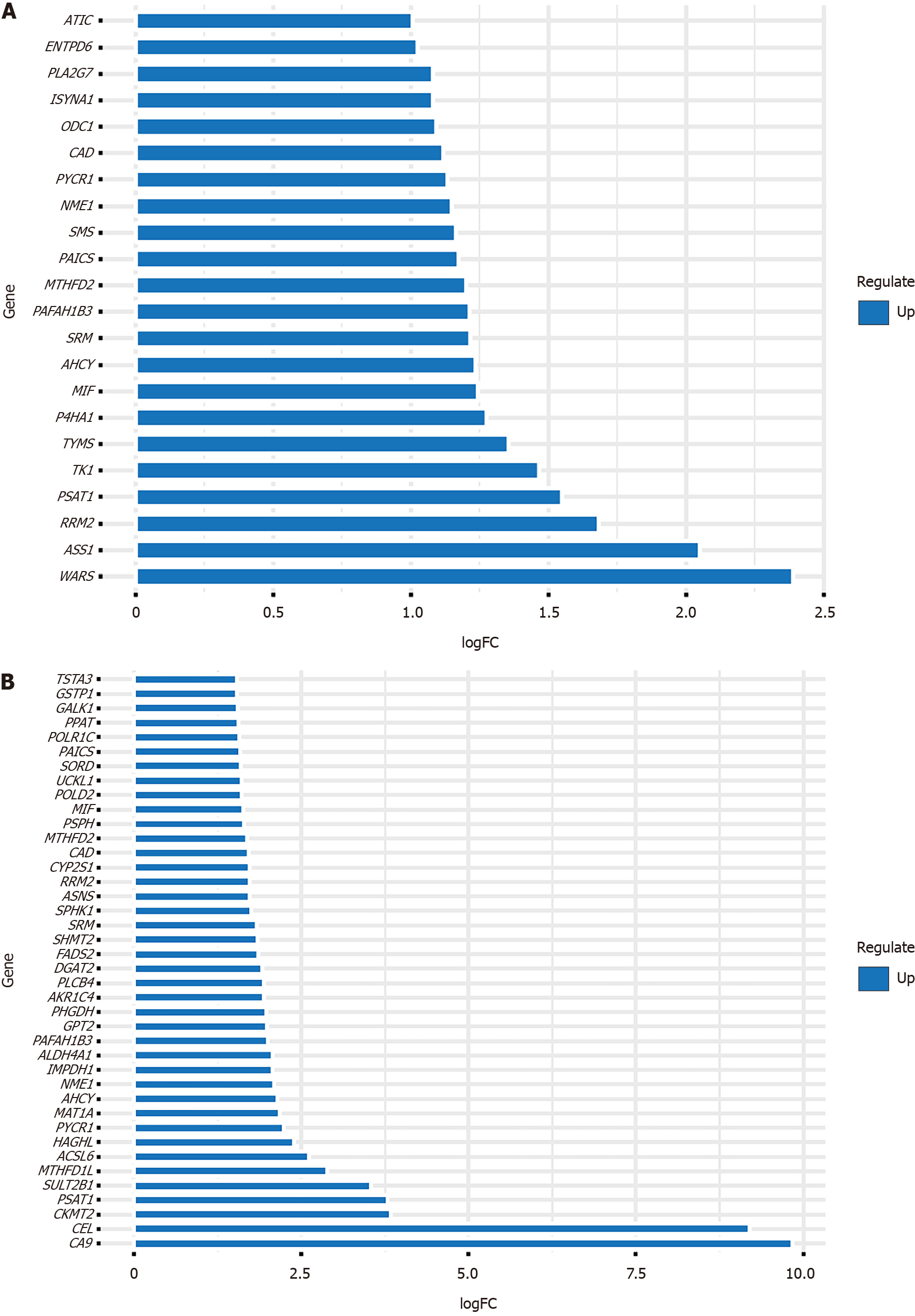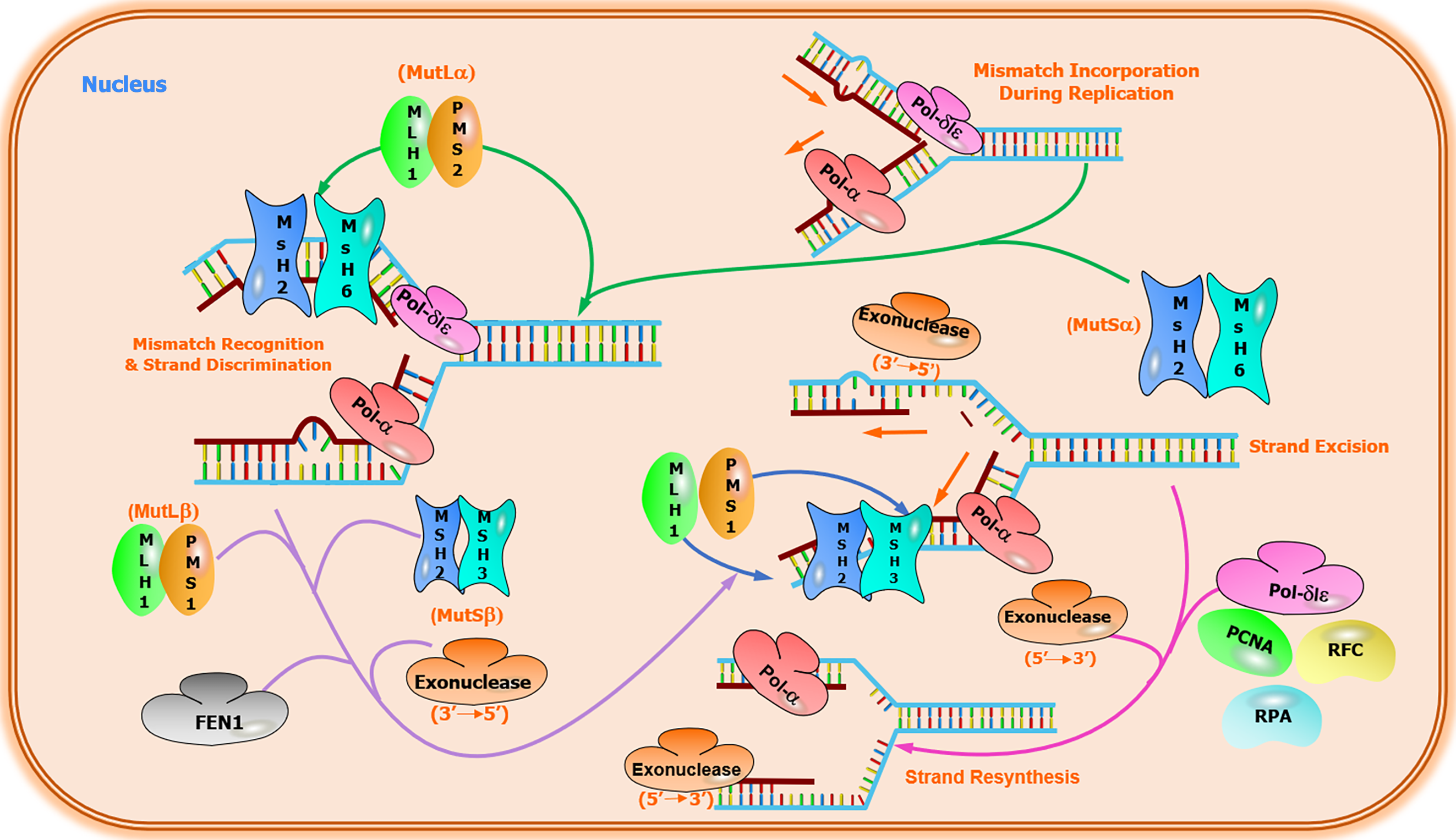Copyright
©The Author(s) 2021.
World J Gastrointest Oncol. Aug 15, 2021; 13(8): 758-771
Published online Aug 15, 2021. doi: 10.4251/wjgo.v13.i8.758
Published online Aug 15, 2021. doi: 10.4251/wjgo.v13.i8.758
Figure 1 Differentially expressed metabolic genes in gastric cancer and colorectal cancer based on The Cancer Genome Atlas database.
A: Differentially expressed metabolic genes in gastric cancer. False discovery rate (FDR) < 0.05, log fold change (logFC) > 1; B: Differentially expressed metabolic genes in colorectal cancer. FDR < 0.05, logFC > 1.5. Log FC: Log fold change.
Figure 2 Mismatch repair in eukaryotes.
Mismatch repair (MMR) removes nucleotides mispaired by DNA polymerases and insertion/deletion loops (IDLs) ranging from one to ten or more bases that result from slippage during replication of repetitive sequences or during recombination. Defects in this system dramatically increase mutation rates, fuelling the process of oncogenesis. Four main steps involved in MMR are: (1) Recognition of base-base mismatches and IDLs; (2) Recruitment of additional MMR factors; (3) Search for a signal that identifies the wrong (newly synthesized) strand, followed by degradation past the mismatch; and (4) Resynthesis of the excised tract[107]. There are several mispair-recognizing proteins. The eukaryotic MMR system contains proteins related to the bacterial MutS and MutL proteins but is more complicated than the bacterial system. It involves two different heterodimeric complexes of MutS-related proteins, MSH2-MSH3 (known as MutSBeta) and MSH2-MSH6 (known as MutSAlpha), and each has different mispair recognition specificity. Heterodimer MSH2-MSH6 focuses on mismatches and single-base loops, whereas MSH2-MSH3 dimer (MutSBeta) recognizes ILDs. Similarly, instead of a single MutL-related protein, eukaryotic MMR involves a heterodimeric complex of two MutL-related proteins, MLH1-PMS1 (PMS2 in humans)[108]. Heterodimeric complexes of MLH1/PMS2 (MutL-α) and MLH1/PMS1 (MutL-β) interact with MSH complexes and replication factors. Excision and resynthesis of the nascent strand (containing the mismatch or IDL) are performed by several proteins, including proliferating cell nuclear antigen, replication protein-A, replication factor-C, exonuclease-I, DNA polymerases delta/epsilon, endonuclease flap structure-specific endonuclease-1, and additional factors. MMR components also interact functionally with nucleotide excision repair and recombination. PCNA: Proliferating cell nuclear antigen; RPA: Replication protein-A; RPC: Replication factor-C.
- Citation: Miao YD, Mu LJ, Mi DH. Metabolism-associated genes in occurrence and development of gastrointestinal cancer: Latest progress and future prospect. World J Gastrointest Oncol 2021; 13(8): 758-771
- URL: https://www.wjgnet.com/1948-5204/full/v13/i8/758.htm
- DOI: https://dx.doi.org/10.4251/wjgo.v13.i8.758










